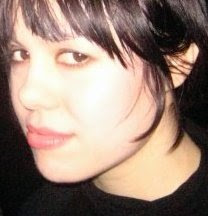It's been quiet on the home front here, but the end is drawing near (2 more weeks before the final presentation on 5/7, to be exact), and there is quite a lot to update.
This project has changed a lot since its conception, but many new ideas and potential future project concepts have sprung up along the way, and I am pretty pleased with how the project at hand is shaping up.
The original plan was to embed circuitry in felt itself... something I am still interested in exploring. I wanted to design felted audio signal processing circuits that would accept an analog signal in and output it back out after running through a series of filters.
I am near completing a similar project, only I decided to begin the research from a simpler place, working my way up the ladder of experimentation.
Having said that, felted signal processing has become a set of analog signal processing circuits consisting of a chorus effect, delay effect, tremolo effect, and finally, distortion effect. The processing circuits live on pcbs instead of within the felt itself, reassigning the felt's role from circuit board to soft potentiometer. The felt is directly integrated into the hardware, allowing the user to tranform various stages of the processing circuits as the audio signal passes through the mix of natural wool and steel wool.
For example, with the tremolo circuit, there are two felted objects. One controls the rate of the tremolo, while the other controls the depth. There are also two hardware pots available for setting the initial rate/depth. The felted pots offer expressive control over base settings that the user can dial in with the hard pots, for the purpose of introducing some constants to the system. The hardware pots can also be turned all the way down, leaving the signal processing to as much instability and momentary control as desired by the user. The goal is to set a fixed range over which the felt can distort the sound.
Each effect is daisy chained to itself and may be turned on or off within the chain by a switch. However, after I have all the effects and felted controllers finished, I plan on building a 3x3 resistor mixing matrix, that will provide multiple opportunities for feedback, amplification, and attenuation of the signal. Instead of each effect simply being daisy-chained to one another, they will be tied to various nodes in a 9-celled square, each node have 2 or 4 possible routes it can travel down. It opens the the doors up to all kinds of silliness, for sure.

No comments:
Post a Comment